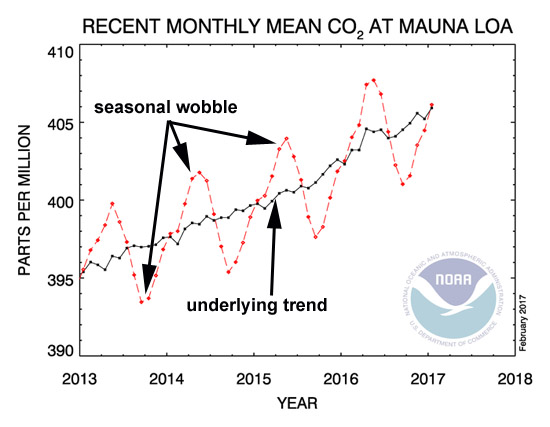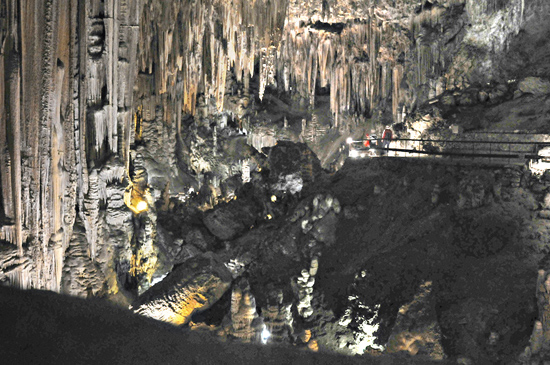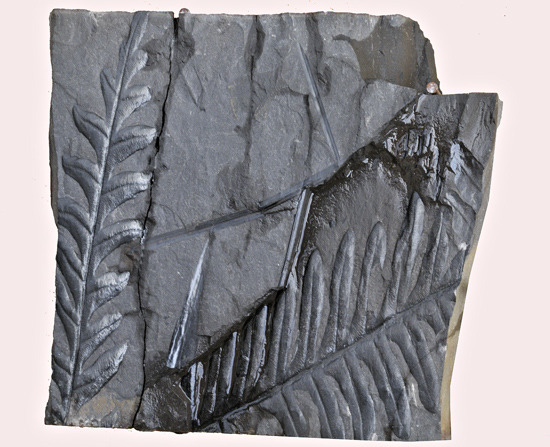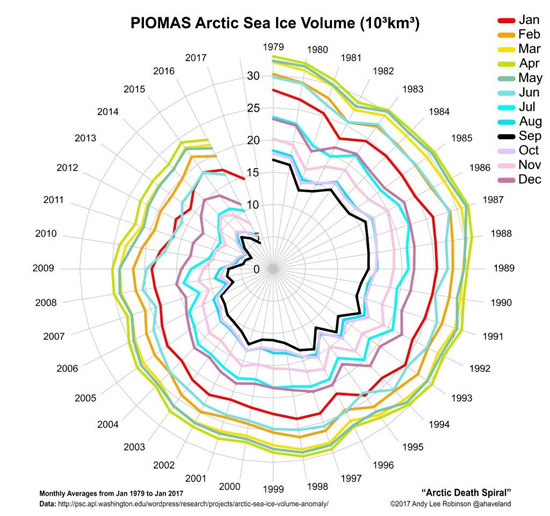Dear Mr President: another message from across the Pond
Posted on 28 February 2017 by John Mason
The Carbon Cycle in 49 tweets
There seem to be a fair number of communications being sent to the White House right now. On Thursday 23rd February, The Hill reported that "Climate sceptics ask Trump to withdraw from UN agency". The "agency" in question being the U.N. Framework Convention on Climate Change and the name behind the letter being Richard Lindzen and some 300 of his buddies. This bunch of 300 signatories has something of a resemblance to those behind a January 2016 letter to NOAA, again with Lindzen involvement. Both lists read like a who's who of the usual suspects. Some sections could almost have been copied and pasted from the DeSmogBlog database of climate misinformers.
That aside, Lindzen and friends have missed an important point in this instance. Trump's preferred style of written communication is The Tweet. A series of long paragraphs is unlikely to garner the desired attention. Sometimes, it is necessary to communicate to people in their own language.
So let's try just that, in explaining to President Trump the importance of and the hazards associated with Earth's Carbon Cycle. Unlike Twitter though, this post reads in a user-friendly way, from top to bottom. So, without as much as a smidgen of FAKE NEWS, here we go:
@RealDonaldTrump 1/49
We want to tell you all about the Carbon Cycle. It helps make this planet great, so long as you don't MESS WITH IT.
@RealDonaldTrump 2/49
The Carbon Cycle is in two parts. One fast & one slow. They are different things because of the stuff they involve.
@RealDonaldTrump 3/49
The Fast Carbon Cycle involves plants. They feed on CO2 & make sugar. They keep it in their roots, stems and stuff.
@RealDonaldTrump 4/49
In summer they use the sugar for energy. They grow so much. In winter they lie dormant. So lazy. Should be fired.
@RealDonaldTrump 5/49
Lazy winter plants don't feed much so atmospheric CO2 goes up a bit. When they feed in summer, CO2 goes down a bit.
@RealDonaldTrump 6/49
Feeding pattern makes the seasonal wobble on CO2 graphs. Up & down, up & down, year in year out. So like a heartbeat.
@RealDonaldTrump 7/49
Some plants get eaten. Some burn in fires. When plants die they rot. Either way, carbon goes back to the atmosphere.
@RealDonaldTrump 8/49
But new plants come up every spring, start feeding on CO2. It lets them grow. They RETAKE what their ancestors lost.
@RealDonaldTrump 9/49
So the Fast Carbon Cycle is in balance. Look after those plants & it stays that way. Now for the Slow Carbon Cycle.
@RealDonaldTrump 10/49
The Slow Carbon Cycle works over millions of years. Normally. But sometimes things happen that mess it up.
@RealDonaldTrump 11/49
How it works: CO2 comes from volcanoes. A few 100 million tons every year. That's the main SOURCE. Apart from us.
@RealDonaldTrump 12/49
Did you know, Mr President, that CO2 used to be called “carbonic acid gas”? Carbonic acid is CO2 dissolved in water.
@RealDonaldTrump 13/49
In the air, CO2 dissolves in raindrops. They bring carbonic acid down to the ground. Supply is near-constant.
@RealDonaldTrump 14/49
Carbonic acid is WEAK but it can slowly attack most rocks and minerals. It's slow but it always wins and they LOSE.
@RealDonaldTrump 15/49
Limestone is a really big loser. Carbonic acid hits it so hard we end up with caves, stalactites & stuff.
Limestone caves, Nerja, southern Spain. Carbonic acid did all of this! Photo: author.
@RealDonaldTrump 16/49
Carbonic acid also attacks other rocks like basalt. Basalt is full of calcium & magnesium & it's really common.
@RealDonaldTrump 17/49
Carbonic acid attacks basalt everywhere, all the time. Happening on a massive scale. Process is called “weathering”.
@RealDonaldTrump 18/49
Weathering forms solutions of calcium & magnesium. End up in rivers & then in the sea. Weak but a constant supply.
@RealDonaldTrump 19/49
In the sea, calcium recombines with carbon & oxygen to make carbonate. Happens all on its own if chemistry's right.
@RealDonaldTrump 20/49
Or you get critters living in the sea that make their own carbonate. They make all those beautiful shells.
@RealDonaldTrump 21/49
Corals make carbonate homes to live in. These form wonderful coral reefs. They depend on it.
@RealDonaldTrump 22/49
Carbonate slowly turns into limestone. New limestone is always forming. Not such a loser after all! Clever!
Limestone, with critters that made their own shells from calcium carbonate, in the Jurassic Period, around 180 million years ago. Limestone is constantly forming in the world's seas. Photo: author.
@RealDonaldTrump 23/49
Leave all that limestone be & it stores that carbon. Stops it going any place else. Limestone is a carbon RESERVOIR.
@RealDonaldTrump 24/49
Trillions of tonnes of carbon are stored in limestone. But what about the other big store? The fossil fuels?
@RealDonaldTrump 25/49
I'm talking about all those dead plants. Some got buried & preserved. They are millions of years old. So ancient.
@RealDonaldTrump 26/49
These two are the Walmarts of carbon storage. Volcanoes let the stuff out. Limestone and fossil fuels LOCK IT UP.
@RealDonaldTrump 27/49
But what happens if the Slow Carbon Cycle gets messed with? That can work two ways. Geological record tells us this.
@RealDonaldTrump 28/49
If weathering goes crazy it uses too much CO2. You get global cooling. How about plants? They like CO2.
@RealDonaldTrump 29/49
Land plants only appeared a few hundred million years ago, when they evolved from the stuff that lived in water.
@RealDonaldTrump 30/49
Once they appeared, land-plants evolved fast. Then they invaded. Soon, Earth was covered in forests. So beautiful.
@RealDonaldTrump 31/49
The forests got to work on the plant-food in the air. They pulled down so much CO2. Its concentration fell and fell.
CO2-munchers: fossil ferns from the Carboniferous, over 300 million years ago. During the previous 100 million years, the land became afforested. Photo: author.
@RealDonaldTrump 32/49
That carbon was taken out of the Slow Carbon Cycle & put right into the Fast Carbon Cycle, like it changed sides.
@RealDonaldTrump 33/49
What happened next? It cooled. There was an ice-age. Same happened when first green plants showed up in the water.
@RealDonaldTrump 34/49
Same happened when significant oxygen first featured in Earth's atmosphere. That was 2.3 billion years ago.
@RealDonaldTrump 35/49
With oxygen in the air, methane came under attack. Methane is a strong greenhouse gas, but it got oxidised. It LOST.
@RealDonaldTrump 36/49
Each time these things happened there was cooling & ice-ages. So BAD. But what if you ADD more CO2 to the air?
@RealDonaldTrump 37/49
If you mess with the Slow Carbon Cycle the other way you get global warming. Some volcanoes can accomplish this.
@RealDonaldTrump 38/49
They must be really special volcanoes called Large Igneous Provinces. Not been one erupting for millions of years.
@RealDonaldTrump 39/49
Large Igneous Province eruptions are so big. Make Mt St Helens look like July 4th fireworks in a suburban back-yard.
The Siberian Traps Large Igneous Province, main suspect for the end Permian mass extinction (96% of species lost). It's just huge (scale-bar bottom left).
@RealDonaldTrump 40/49
Large Igneous Province eruptions last 1000s of years. Every century they can make 500-5,000 billion tonnes of CO2.
@RealDonaldTrump 41/49
They mess with the Slow Carbon Cycle big time. They overload it. Worse than most asteroids. They are killers.
@RealDonaldTrump 42/49
Large Igneous Provinces pollute. They wreck the climate. Caused some of the worst extinctions in Earth's history.
@RealDonaldTrump 43/49
Mr President, we're making over 3,000 billion tonnes of CO2 per century. We're acting like a Large Igneous Province.
@RealDonaldTrump 44/49
By burning oil, coal & gas at this rate, we are acting just like those special volcanoes. We really are. So sad!
@RealDonaldTrump 45/49
That's why CO2 graphs have trends going up & up & up. Last time we had an atmosphere like this was in the Pliocene.
@RealDonaldTrump 46/49
CO2 is a crazy gas. It multi-tasks. It's plant-food, a big greenhouse gas, it trashes rocks & it's an asphyxiant.
@RealDonaldTrump 47/49
The Slow Carbon Cycle should NOT be messed with. We are messing with it right now, big time. That's BIG news.
@RealDonaldTrump 48/49
Never before has a life-form messed with the Slow Carbon Cycle on purpose. Plants didn't do that. They just grow.
@RealDonaldTrump 49/49
Dear Mr President, plants don't get to make decisions. They're just dumb. But we CAN make decisions. Whaddya say?
And finally, Mr President, I'll just leave this here. Arctic sea-ice volume, Jan 1979 to Jan 2017.
Everywhere you look, Mr President, the indicators point the same way. Now, who will you listen to?
The scientists who have worked on this stuff for nearly two centuries - or those guys who made their fortunes digging up the fossil fuels?
Think carefully. We don't have a spare Earth if we mess this one up.
Regards from across the Pond.
Graphic: Andy Lee Robinson.































 Arguments
Arguments






























23 & 24 so WRONG! Calcification a SOURCE not sink of CO2. See Equation 1 of OA not OK (link left side bar). COMPLEX - some buts and ifs.
In terms of total carbon though (which is the subject here), half the carbon from bicarbonate swishing around in the sea gets locked away as calcium carbonate. Hence the specific description of limestone as a CARBON sink, not a CO2 sink. Every description of the slow carbon cycle mentions the same. Carbon locked up in limestone is mostly out of the way, unless it gets cooked or weathered - and for a lot of limestone that's only a minor, localised process.
The 49 tweets went out on Twitter:
https://twitter.com/skepticscience/status/836637742272503808
@1 Doug Mackie, while you're technically correct that steps 23 & 24 are sources of CO2 steps 16, 17, 18 & 19 skip the formations of soluble magnesium and calcium silicates, the precipitation of silicic acid which is the step that takes the acid function from CO2 with the formation of bicarbonates.
Over all, the CO2 from the air dissolves rocks, goes into carbonates in the shallow oceans but the details that were skipped don't help a 6 year old "Winnie the Pooh" level thinker like Trump to understand the science. Moot point?
Doug is right @1. Formation of solid phase calcium carbonate stores 1 C atoms in sediment, but it removes alkalinity from ocean that (at current pH) could store ~2 C atoms. So net loss of C storage between oceans and sediment that must go back into air.
Now, how one would explain that to Trump, I have no idea. I can't believe he could get past tweet number 3 before he would lose interest, much less make it to 23.
I like the Death Spiral presentation of the Arctic Sea Ice Mass.
It may be even more effective paired with a regular line graph. The line graph would show how the rate of reduction has noticeably increased since the late 1990s (no statistical evaluation required). The spiral makes it difficult to see that there was only a slight reduction from 1978 to the late 1990s (the first 20 years) compared to the more recent rate of reduction (the most recent 20 years).
The implication is that although the rate of atmospheric CO2 increase has been generally steady some of the impacts on significant aspects of the global climate system are accelerating, even through the period of time that some people still try to claim was a hiatus or stop of the warming of the surface.
@4: Dissolution 1x carbonate rock (weathering) uses 1x CO2 & makes 2x bicarbonate (not carbonate). Weathering = sink CO2. Equatn 4 OA not OK
@7 http://www.ldeo.columbia.edu/gpg/projects/carbon-sequestration
Mg2SiO4 (olivine) + 2 CO2 (from gas or fluid) = 2MgCO3 (magnesite) + SiO2 (quartz)
OK, I like this, but I don't get
"Feeding pattern makes the seasonal wobble on CO2 graphs. Up & down, up & down, year in year out. So like a heartbeat."
When it's winter in the Northern Hemisphere (the Greatest Hemisphere, the most Hemi Spherical sphere there's ever been ;-), it's summer in the Southern Hemisphere (Southern anything makes people lazy, this is proof ;-).
Um, anyway, it should be equally winter and summer in wherever locations, ignoring that land mass is unevenly distributed around the globe. So why the seasonal C02 jig-jag?
DrivingBy... Pull up any image of the globe. Note that the total land mass above the equator is greater than that below. Reverse with the oceans. Right?
That's why you get that seasonal CO2 cycle. There are some really great videos of the process in action here.
DrivingBy @10, not only is there far less land in the Southern Hemisphere (48.7 million km^2) than the Northern Hemisphere (100.2 million km^2), but the Southern Hemisphere has far less Deciduous Forest:
(Source)
That is important because evergreens, which are relatively far more common in the Southern Hemisphere, do not generate a seasonal cycle in CO2.
Further, the stronger NH cycle diffuses across the equator, obliterating the innate SH cycle (to which it is antiphase):
So strong is this effect that it is only from about the latitude of New Zealand that the CO2 cycle in the SH follows its own seasons rather than those of the NH.
@9 What a treasure trove the work of Wally Broecker is!! Thank you for the reference. No wonder you did not bother to write about igneous rock weathering. I'd expect now from a slight glance from "over Broecker shoulder" that igneous rocks rate of weathering is going to be some what slower than carbonate rock weathering.
@10 DrivingBy, further to what Rob and Tom said..."The Pumphandle" video showing the Keeling curve as well as other CO2 measurements from around the globe, clearly shows the differences in S. and N. hemisphere CO2 measurements as the years pass. The graph on the left side shows the various CO2 stations according to latitude. The south pole station is the blue dot on the far left and the Keeling measurements come from Mauna Loa, the red dot. Notice how much the other station readings in the northern hemisphere bounce around during each year.
6 - OPOF: I personally think that the spiral is drawn the wrong way.
There is a natural periodicity to months of the year and to a circle. I think the month should be the angular axis, and the year should be the radial one. That shows clearly the inward spiral of the years, with a wobbly shape reflecting the seasonal changes.
I can't see any benefit at all in curving the natually linear time axis.
$0.02
@me in 15. Of course I was wrong to suggest that the radial axis be the year; it has to be the amount of ice. Actually, there doesn't need to be a year axis at all, because the spiral is continuous, and the progression through the months shows how many years have elapsed.
This site has had similar graphs for other quantities (CO_2 levels?).
OK - SINK now RESERVOIR!